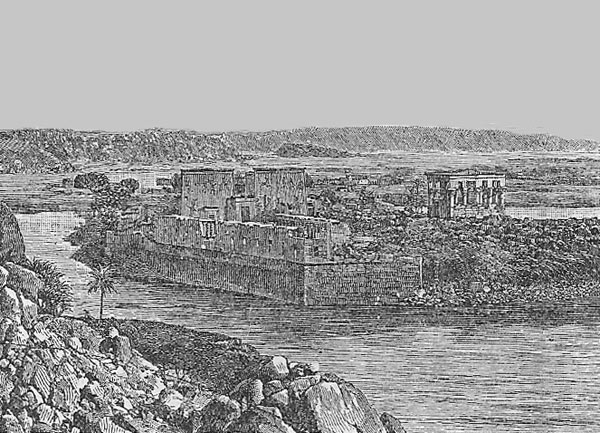Philae

The island of Philae seen from the southwest corner prior to construction of the Aswan Dam.
Philae (Gr. Philai, Egyptian Palek), an island in the reservoir of the Aswan Dam and originally near the First Cataract of the Nile, near Aswan and south of Syene, in Nubia. It is a small granite rock, fringed with rich verdure, about 1200 feet long and 450 feet wide, that was almost covered with ancient buildings of great architectural beauty and interest, though not of very ancient date. That to the east, a hypsethral or roofless hall, commonly called "Pharaoh's bed", belongs to the Greek and Roman period, and consists of fourteen great columns with capitals of various patterns, connected at the lower part by solid walls; the length is 63 feet, the width 48. The great temple of Isis, to whom the island was sacred, was mainly built by Ptolemy Epiphanes, and continued by his successors, especially by Ptolemy III, Euergetes. The temple complex was dismantled and moved to nearby Agilkia Island, prior to 1970, as part of the UNESCO Nubia Campaign project.
The processions of pilgrims approached the island from the south, were received by the priests at a flight of steps at the southwest corner, and then passed into a court with a colonnade to right and left, erected by Tiberius and later Roman emperors. To the north stood the great propylon or gateway, 60 feet high and over 120 wide. This is the oldest part of the temple, and beam the name of Nectanebes II (about 361 BC). Beyond was another court with several chambers and a small chapel. Another smaller pylon gave entrance to the temple proper, at the northern end of the irregular complex of buildings (converted to a Christian church in 577).
